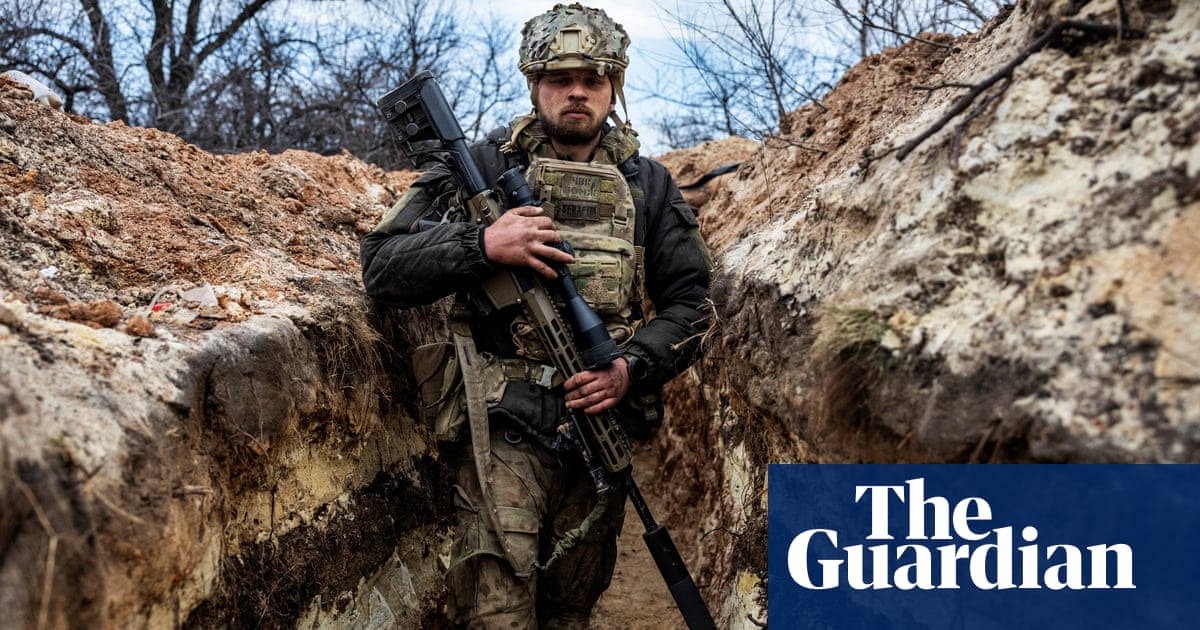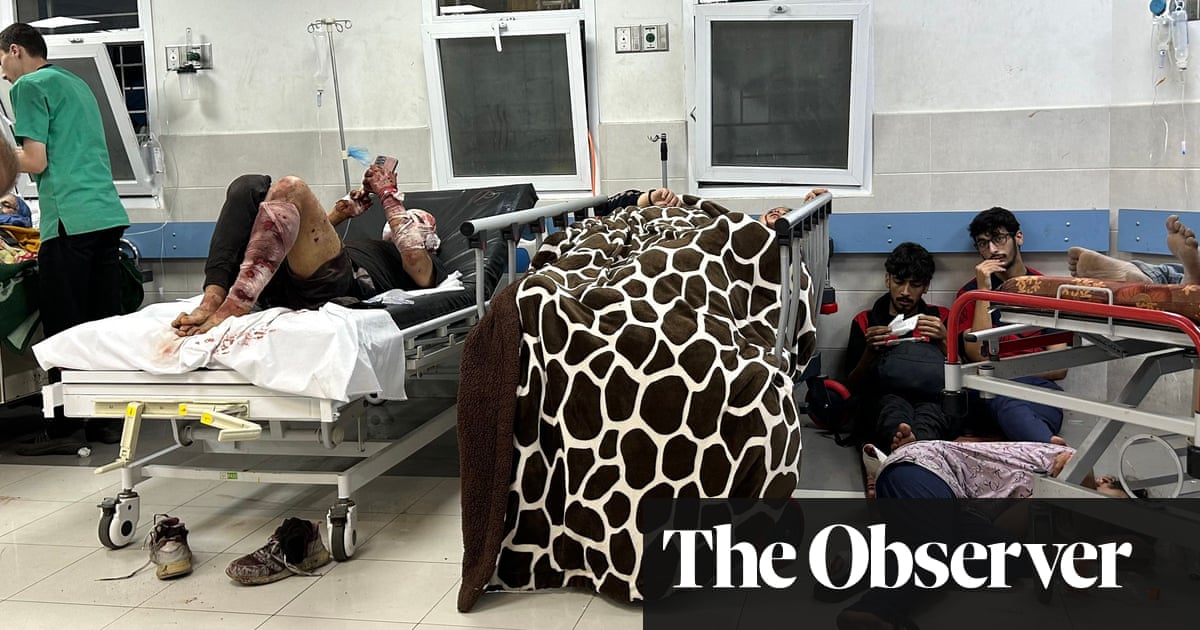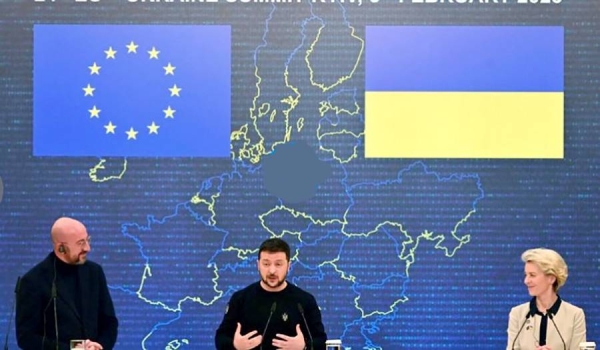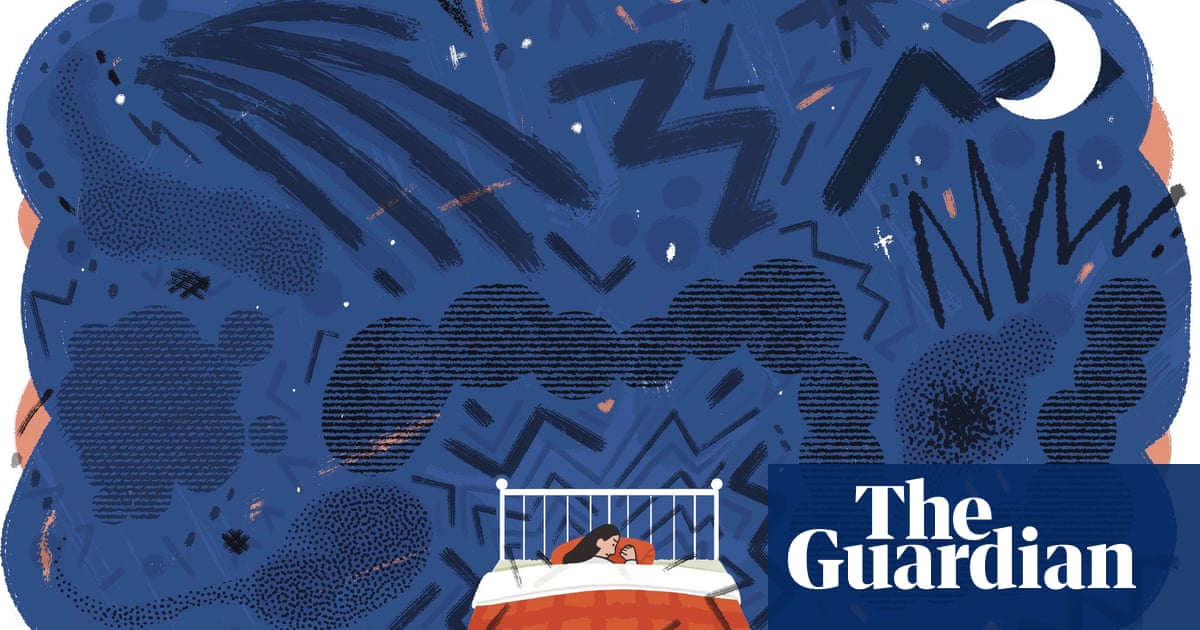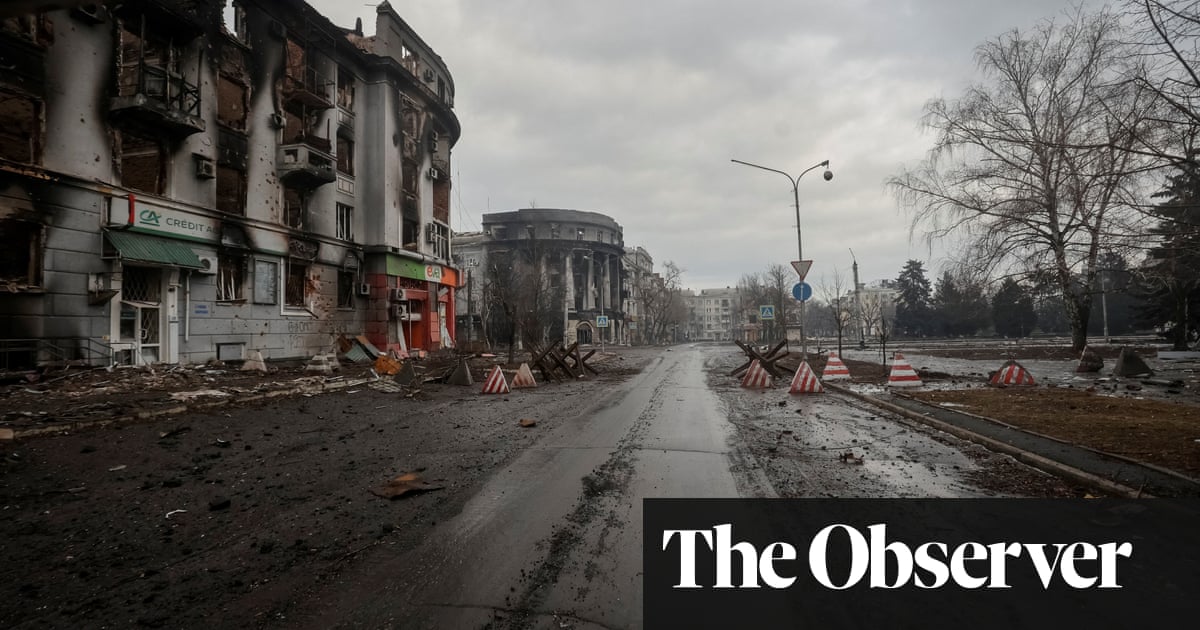
War breeds euphemism and metaphor. In the battle for the Donbas city of Bakhmut, threatened with a closing encirclement by Russian forces after seven months of bitter fighting, there are “White Angels” and “Dark Angels”, the “road of life” (the Bakhmut-Lysychansk highway, which is anything but) and the “Invincibility Centre”.
The White Angels, a police evacuation group, scour the lethal districts of the shell-ruined city to evacuate children and the elderly.
Their counterparts, the Dark Angels, take out the dead. The Invincibility Centre is where the few thousands of civilians who remain can find water and hot food cooked by the volunteers who have stayed in the city, even as in the past fortnight it has faced an increasing threat of finally being overrun.
In a town to the west of the city, the Observer meets Oleksandra Havrylko, a 30-year-old police major who has recently spent time in Bakhmut and the surrounding villages with the White Angels, trying to persuade those caring for the last few dozen children to let them be evacuated.
It is a search that has led to rumours that police are taking children from parents who refuse to leave, which has prompted some families to hide their sons and daughters, inexplicable as that might seem.
“Unfortunately, it’s true,” she says sadly. “There have been cases of people hiding children because they’ve heard rumours that the police will take their children by force.
“But it’s not correct. The law says we can only take children with permission of the parents. If the children don’t have parents but have a guardian, we can get permission from social services to take them out.”
Instead, she says, they are required to persuade families to leave. Last week that meant a visit to a village just outside Bakhmut.
“We were looking for children. We had an address where we were told some children might be living. How we approach individuals depends on the situation.”
Sometimes, she explains, it requires several visits and a sense of building familiarity to persuade people to leave.
“There was a family who said they didn’t have any money to leave or to rent somewhere. There was a seven-year-old child with them.
“The grandfather wanted to evacuate but the mother didn’t. So, two weeks ago we found an apartment in advance and we photographed it to show them the pictures. And we said ‘look, this is where you’ll be going’.”
She shows pictures of the conditions that the civilians have been living in: damp, bare basements with flaking walls, many without any electricity, none with running water.
“There are some cases where people equip their basements to make them more or less liveable. In one case, I saw a generator and children playing video games. But a lot of basements weren’t even designed to serve as bomb shelters.
“They’re just filled up with stuff which people have brought down so they won’t get damaged: carpets, fridges, washing machines – even microwaves, none of which work. It looks a like dirty warehouse, wet. No electricity.”
The unremitting violence that has engulfed Bakhmut in recent weeks, after seven months of Russian efforts to capture the city, has only intensified in the last few days as Russian forces, including the Wagner mercenary group, have edged closer to encircling the city.
Viewed on a time lapse map, the areas held by Russian forces have pushed further west both north and south of the city, creating a pocket whose entrance they are now trying to shut off.
As both sides have poured more troops into the battle – the Russians in often-suicidal infantry assaults that have sought to swamp the defenders – and Ukrainian officials have spoken publicly about the possibility of withdrawal, the fighting has washed all around the city, threatening the last access routes.
Roads out that were drivable only weeks ago are threatened by anti-tank missiles, artillery and phosphorous shells.
On Friday, Yevgeny Prigozhin, founder of Russia’s Wagner mercenary force, said in a video that the Ukrainian city of Bakhmut was “practically surrounded” by his forces and that Kyiv’s forces had only one road left out.
Prigozhin, wearing a military uniform in the video, called on Ukrainian president Volodomyr Zelenskiy to withdraw his forces from the small city.
“Units of the private military company Wagner have practically surrounded Bakhmut. Only one road is left (open to Ukrainian forces). The pincers are getting tighter,” said Prigozhin.
What the immediate future holds for Bakhmut’s defenders is more confusing – perhaps, deliberately so.
As a pair of key bridges – one across the Bakhmutka River and another along the Khromove-Bakhmut route just west of Bakhmut – were blown up by Ukrainian forces on Friday, many speculated it presaged a withdrawal.
Among them was the US Institute for the Study of War which said the move suggested “Ukrainian forces appear[ed] to be setting conditions for a controlled fighting withdrawal from parts of Bakhmut.”
The latest update from the UK Ministry of Defence described the Ukrainian defence as under “increasingly severe pressure” and vulnerable on three sides, with Russian forces advancing into the northern suburbs.
A flurry of top Ukrainian military officers has visited the front, including the head of the country’s land forces, Oleksandr Syrskyi, who has been to Bakhmut twice in recent days.
The sense that the battle might be entering its last days has been reinforced by the preparation of new defensive lines further to the west, including around the nearby city of Kramatorsk, where new bunkers and trenches were being rapidly prepared.
And despite the slogan – repeated by soldiers in the field and politicians alike – that “Bakhmut stands!”, in recent days, a sense of grim inevitability has crept in.
In a cafe in Kramatorsk, Bohdan Zuyakov, Denys Kovalenko and Mykola Sidorov of the Kramatorsk Union of Volunteers, describe their most recent mission. “February 27 was the last day we were able to go in,” says Zuyakov, explaining that they had delivered fuel for generators, food, paper plates and cutlery. “The situation doesn’t allow it,” Sidorov adds. “All the roads are under fire.”
It was a two-day mission. On the first day, 26 February, it was foggy, and the fog is our friend,” says Zuyakov. “27 [February] was terrible. Even the locals said they barely made it through alive. It was the worst day. When we were going in, we saw soldiers by the road firing and we realised it was not going to be easy.
“Instead, it was a complete nightmare. Shooting everywhere and explosions. It felt like hell on Earth. To tell the truth, we were scared we wouldn’t be able to get out.
“Now,” Sidorov says, “[the Ukrainian authorities] won’t let volunteers go in.” Kovalenko suggests that perhaps that may have been their last visit. “Unless there is a surprise counter-attack, we probably won’t be able to get back in.
The three men offer their own description of the conditions civilians are enduring. “One family’s apartment got hit four times before they agreed to leave,” says Zuyakov. “There are now people who want to leave, but it’s hard to get them out.”
Oleksandra Havrylko tries to explain the resistance of those who have refused to leave. “People have stopped being scared. They’ll walk through the shelling to reach the Invincibility Centre to fetch water. They’ve got used to it, and I can relate to some of this. I lost my house in Mariupol. My parents lost their home in Donetsk province close to the front line. People are refusing to go because they are saying ‘that’s my home’ and they would rather die there,” she says.
“We are all locals and we’re all just holding on here. We have to hold on to what we have left.”




